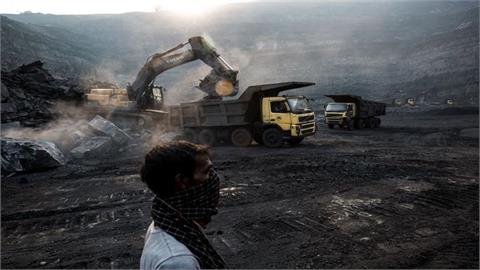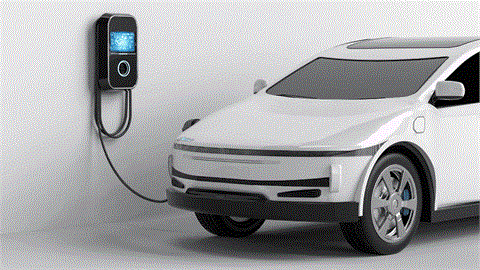The pileup of proposals for wind and solar power plants in Greece bolstered the interest in investments in pumped hydropower storage facilities to balance the output from the two intermittent sources. Government-controlled PPC is dominating the map.
Greece is already preparing its third battery energy storage tender, making it one of the most advanced markets in Europe, but acceleration is also evident in the pumped storage hydropower segment. Wind and solar power plants are being built in such quantities that neither demand nor the grid can keep up.
As for placement, Greek investors are counting on a network of interconnections from Saudi Arabia to Poland to enable power sales, alongside a rise in electrification of nearly everything and the expansion of cloud computing and artificial intelligence systems.
But wind power and photovoltaics are dependent on the weather. Pumped storage hydropower is still the only reliable technology for balancing on a massive scale. The point is to bridge the gaps between renewable electricity supply and demand. In theory, helped by demand response and batteries, a strong pumped storage capacity can keep the power system stable for days without wind and with little solar power.
In the meantime, much of production is curtailed – going to waste.
The final version of the National Energy and Climate Plan reportedly includes 4.32 GW in battery systems together with pumped storage hydroelectric plants of an overall 1.74 GW.
PPC to upgrade two existing hydropower plants into pumped storage systems
State-controlled Public Power Corp. (PPC) used to be heavily dependent on coal. But with the government’s determination, legal reforms and European funding, it spearheaded Greece’s energy transition. The utility is now by far the most agile in Southeastern Europe and beyond in its sphere. It plans to end using coal in 2026.
Public Power Corp. controls Greece’s both operational facilities
PPC has no intention of standing on the sidelines in energy storage. It has electricity storage permits for six proposed facilities with 1.6 GW in total in generation mode. But notably, in its financial report for the first half of the year, the utility said the South Field Mine would replace, “for techno-economic reasons,” the Mavropigis Mine pumped storage hydropower project.
In addition, PPC is working on a plan to add pumped storage to its existing Pournari and Kastraki hydroelectric plants.
The country hosts an overall 699 MW in pumped storage capacity at the Sfikia plant in the Central Macedonia province, also in northern Greece, and the Thisavros hydroelectric facility, east from there. Both belong to PPC.
Five more investments dotting map of Greece
As of one month ago, the Regulatory Authority for Energy, Waste and Water (RAAEW) issued permits for an overall 5 GW and a combined storage capacity of 44 GWh.
Terna Energy is building its Amfilochia pumped storage hydropower plant. According to the schedule, it will come online in early 2026. Masdar is taking over the Greek company.
Enercoplan has two projects lined up
Applications for 43 energy storage projects were submitted in the June round to RAAEW, for a combined 2.5 GW. Two are for pumped storage hydropower. HELLENiQ Renewables is planning a facility in Grevena in the Western Macedonia province. It would have 500 MW in operating power in generation mode and 538 MW in pumping mode. The plant is envisaged with 6 GWh in installed and guaranteed storage capacity.
The other project is from Enercoplan. The location is in Arta in Epirus in western Greece. The pumped storage hydropower plant would have 375 MW and 350 MW, respectively, alongside 3 GWh in installed and 2.5 GWh in guranteed capacity.
Then came the July round. The regulatory body received 130 applications, of which five are for pumped storage and the rest for battery energy storage systems (BESS). The developers of the hydropower items are Yliki Energeiaki, Zikos Energy, Parnassos Energeiaki, Aioliki Desfinas and Aioliki Moreas.
Out of 1.87 GW in operating power, the five pumped storage project account for 1.21 GW. Their overall guaranteed capacity came in at a 9.6 GWh.
Major project receives energy storage license
A firm called ZSV Wind Force obtained in July an energy storage license for a project of 290 MW, or 270 MW in pumping mode. It would also be located in the Grevena regional unit. The site, Petroto, is in the Deskatis municipal unit.
The developer plans to provide 2.8 GWh in installed capacity, of which 2.3 GWh would be useful. Since April, Enercoplan controls 70% of ZSV Wind Force.
Several hybrid projects with pumped storage hydropower in plan for islands
On top of it all, Energypress has learned that the Ministry of the Environment and Energy is preparing EUR 200 million to support hybrid projects in islands. They would encompass electricity production, energy storage and desalination, including pumped storage hydropower technology.
The subsidies would be from the Decarbonization Fund for islands. The ambition is to tackle both water shortages and electricity supply.
One unit would cost between EUR 20 million and EUR 30 million. The combined sum could mobilize total investments of EUR 400 million, the article adds, quoting Minister of the Environment and Energy Thodoros Skylakakis.
(balkangreenenergynews.com, August 16, 2024)



